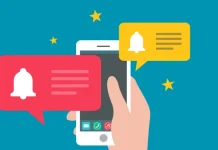Emails are a crucial aspect of modern communication in the business world, and crafting the perfect email can be a daunting task. In addition to the actual content of the message, the way an email is introduced can often make or break the entire exchange. This is where the concept of email warm-ups comes in. In this article, we will explore what email warm-ups are, the benefits of using them, and how to write effective email warm-ups – https://reply.io/warm-up-email/.
What are Email Warm-Ups?
An email warm-up is the opening line or paragraph of an email that serves to establish a connection with the recipient and create a positive first impression. This initial greeting sets the tone for the rest of the email and can greatly impact the response it receives. The goal of an email warm-up is to engage the reader and make them more receptive to the message that follows.
One common type of email warm-up is to start with a personalized greeting that addresses the recipient by name. This simple touch can make the email feel more personable and less like a generic mass email. Another approach is to reference a recent conversation or event that the recipient may have been a part of. This shows that you are paying attention and reinforces the connection between you and the recipient.
It can be interesting for you – https://reply.io/best-sales-books/.
Benefits of Email Warm-Ups
Using email warm-ups can have several benefits, both in terms of improving the effectiveness of your communication and building stronger relationships with your contacts.
Firstly, email warm-ups can help to establish trust and credibility. By showing that you have taken the time to personalize your message and connect with the recipient, you demonstrate that you value their time and attention. This can help to build a positive perception of you and your brand.
Secondly, email warm-ups can increase the chances of your message being read and acted upon. If the recipient is engaged and receptive from the start, they are more likely to continue reading and respond to your message. This can be especially important when sending cold emails or reaching out to new contacts.
Finally, email warm-ups can help to lay the foundation for a long-term relationship. By establishing a positive connection at the outset, you set the stage for future interactions and potential collaborations. This can be beneficial in a variety of professional contexts, from sales and marketing to networking and partnerships.
How to Write Email Warm-Ups
Now that we have established the importance of email warm-ups, let’s dive into some tips and techniques for writing effective ones.
Firstly, always start with a personalized greeting that addresses the recipient by name. This simple touch can make the email feel more personal and less like a generic mass email. If you don’t have the recipient’s name, consider using a generic but friendly greeting such as “Hi there” or “Hello friend.”
Secondly, try to establish a connection or common ground with the recipient. This can be done by referencing a recent conversation or event that you both may have been a part of. Alternatively, you could mention a mutual connection or interest that you share. The goal is to show that you are paying attention and that you value the recipient’s time and attention.
Thirdly, keep your email warm-up concise and to the point. Avoid rambling or going off on tangents. Instead, focus on the key message you want to convey and how it relates to the recipient. This will help to keep the reader engaged and more likely to continue reading.
In conclusion, email warm-ups are a key component of effective communication in the business world. By establishing a personal connection with the recipient at the outset, you can increase the chances of your message being read and acted upon. Keep in mind the tips and techniques outlined in this article when crafting your own email warm-ups, and you’ll be well on your way to mastering the art of email communication.
Try incorporating email warm-ups into your own communication strategy and see how they can help you build stronger relationships and increase the effectiveness of your messages.
Check our follow-up guide from Reply`s specialist https://reply.io/follow-up-guide/.









